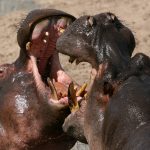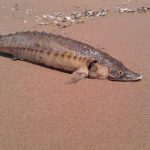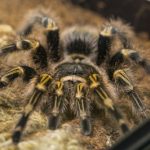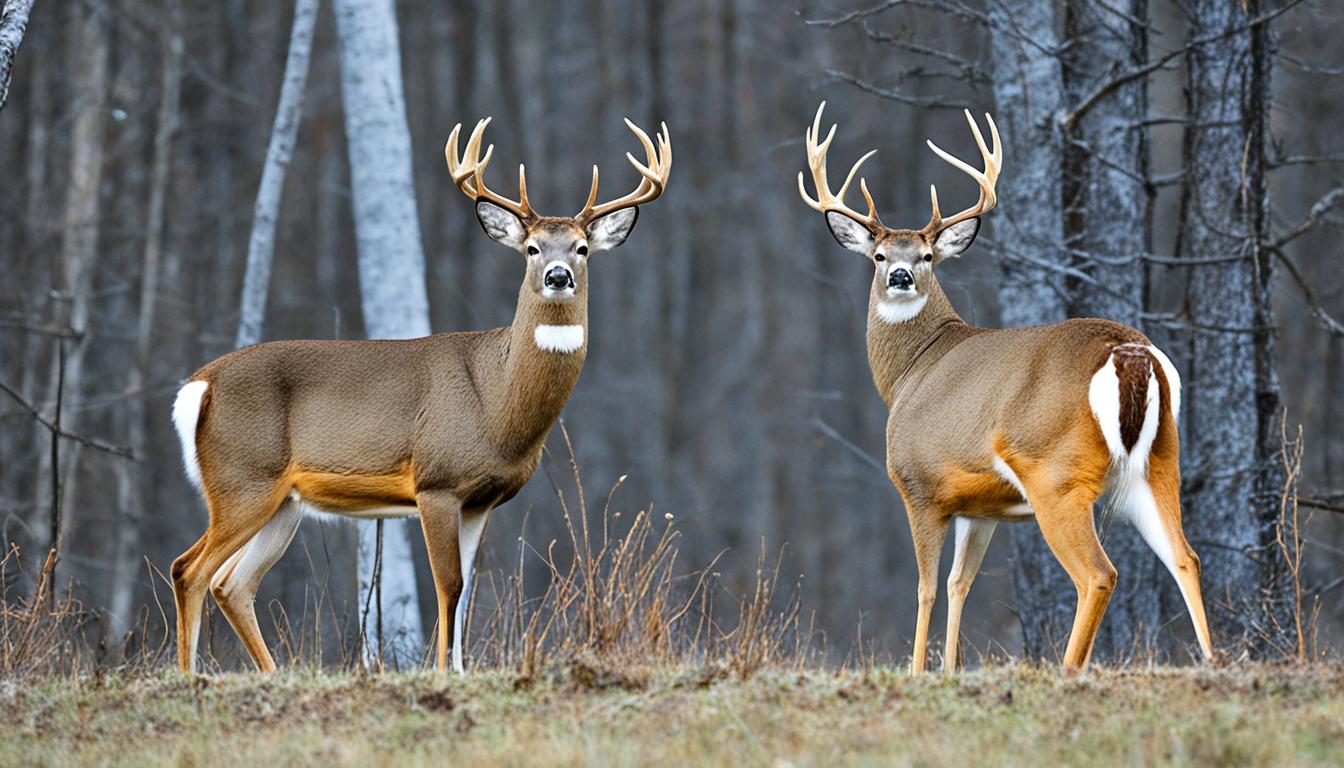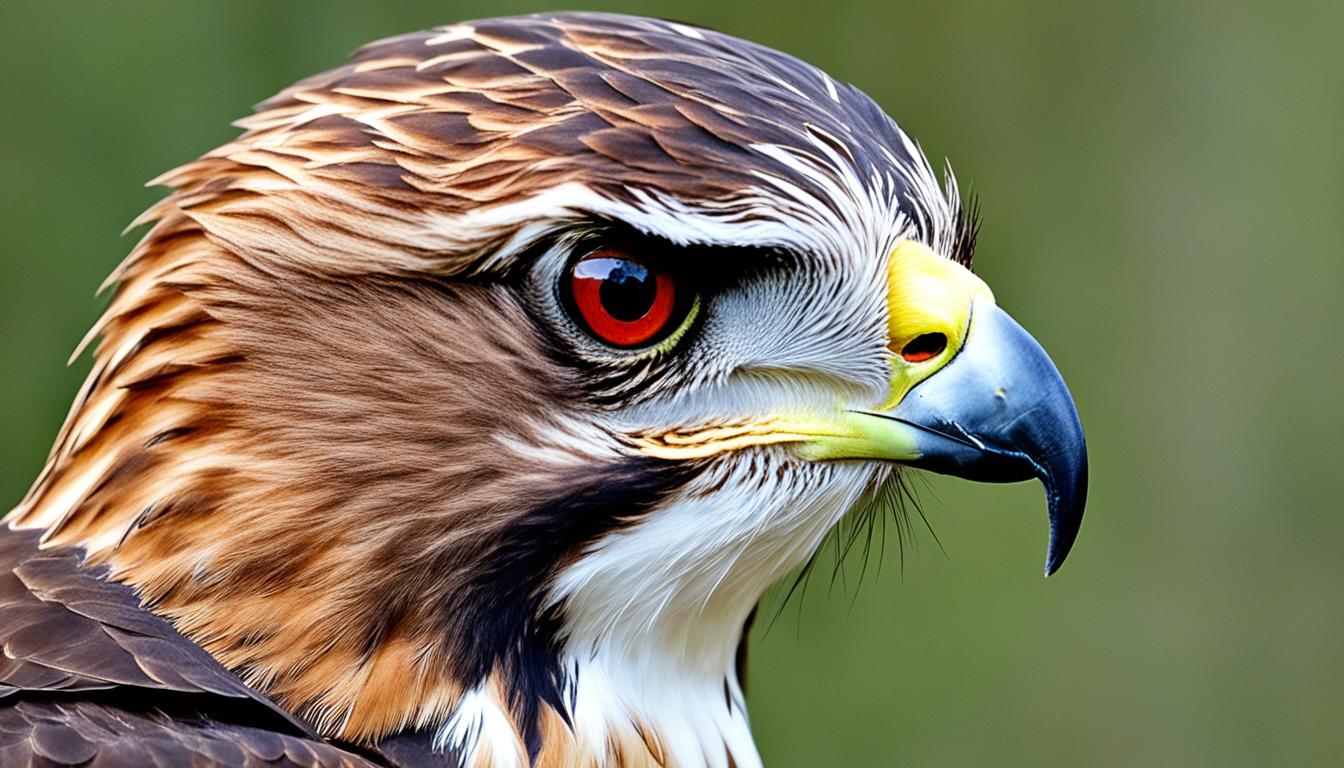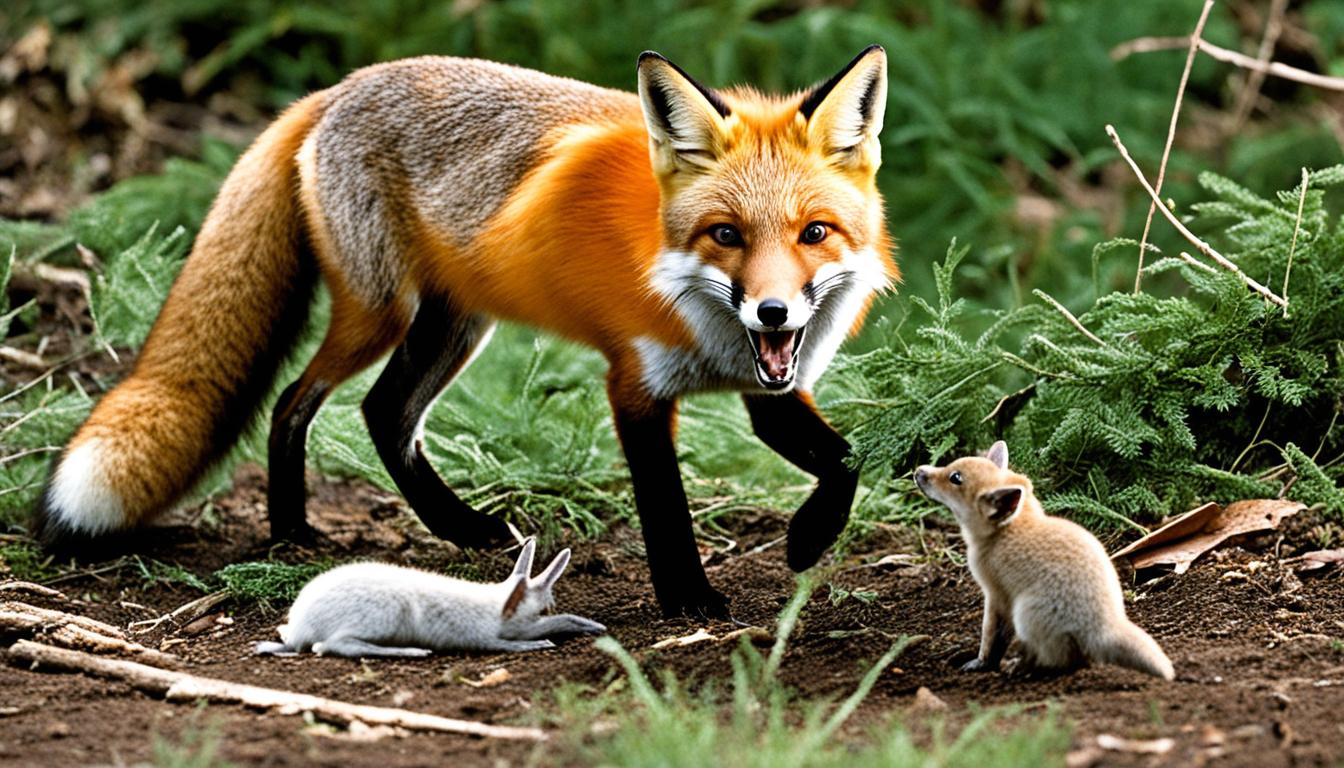The development of horns in some animals has resulted in one of the most noticeable and remarkable adaptations in the animal kingdom’s history. Bovine horn development is common in animals such as cattle and goats as well as buffalo, antelope, rhinos, and deer, among others. Animals use their horns for a number of functions, depending on their species. Some animals use their horns to defend themselves against predators, while others use them to attack and kill other creatures of the same species.
There are a variety of ways in which animals might use their horns beyond attacking and defending themselves, such as digging for food in the ground or peeling bark off trees. The blood vessels found within the horns of some animals help to maintain the animal’s body temperature, and they can also be utilized in mating displays. In most species, males only develop horns; but, in a few species, females can develop horns as well. Horns are available in a wide range of shapes and sizes, ranging from little and straight to long and twisted in appearance.
Ankole-Watusi Cattle
- Scientific Name: Bos taurus indicus
- Type of Animal: Mammal (Domestic cattle)
- Diet: Herbivores
- Horns Size: 37.5 inches

The Ankole-Watusi cattle breed is a relatively new domestic cattle breed that originated in Uganda. Originally, from Africa, the Sanga cattle are considered to be the forefathers of all Ankole-Watusis. The name of the band is made up of two words.
The majority of Ankole-Watusis are reddish-brown in appearance, with white mottling or patches on their bodies and limbs. Males typically weigh between 992 and 1609 pounds, although females often weigh somewhat less. Their massive horns are by far the most distinguishing feature of this species. Ankole-Watusis have the largest horn spread of any domestic cow breed, making them ideal for dairy production. Individual horns can grow up to 37.5 inches in length and have a spread of up to 40.7 inches from point to point, depending on the species.
Alpine Ibex
- Scientific Name: Capra ibex
- Type of Animal: Mammal (Wild Goat)
- Diet: Herbivores
- Horns Size: 39 inches

Alpine ibex, also known as the stein bock, Capra ibex, or simply ibex, is a mountain goat that lives in the wild. It is a member of the goat family. However, they were practically extinct in the nineteenth century, despite the fact that they may be found all throughout Europe’s Alps. While they are gregarious, they tend to congregate in groups based on their age and gender. Males range in height from 35 to 40 inches at the shoulder and weigh between 148 and 258 pounds. Their coat is thick and brownish-gray, which allows them to survive at high altitudes because to the thickness of their fur.
Alpine ibexes are distinguished by the presence of horns, the ability to bend backwards, and the presence of many ridges along the length of their bodies. Males, on the other hand, have horns that are substantially larger. It is possible for them to reach a maximum length of 39 inches from base to tip when at their largest. Men’s Alpine ibex horns are among the biggest in the world, and they are also among the most likely to use them in fighting over potential mates when they are in the process of acquiring them.
Addax
- Scientific Name: Addax nasomaculatus
- Type of Animal: Mammal (African antelope)
- Diet: Herbivores
- Horns Size: 43 inches

It is a spiral-horned antelope that is also known as the white antelope or screw horn antelope, among other names. Despite the fact that they are native to the Sahara Desert, just a few number of them survive in the wild because of unregulated hunting.
The International Union now classes them as Critically Endangered for Conservation of Nature, and the vast majority of the remaining individuals are housed in zoos or nature preserves. Males are normally 41 to 45 inches tall, weigh 220 to 276 pounds, whilst females are shorter, and weigh less than that. Throughout the year, the color of their coat varies, from gray-brown in the winter to white or blonde in the summer, depending on the season.
Despite the fact that it is on the danger of extinction, the addax is still included on the list of animals with the longest horns on the planet. Both men and females acquire horns, which they can bend in and out with one to two loops, depending on their gender. Horns on adult males may grow to be up to 43 inches in length, while female horns are typically 22 to 31 inches in length.
Scimitar Oryx
- Scientific Name: Oryx dammah
- Type of Animal: Mammal (Straight-horned antelope)
- Diet: Herbivores
- Horns Size: 47 inches

The scimitar oryx is one of four oryx species that may be found in Africa, and it is the smallest of the four. The scimitar oryx, also known as the scimitar-horned oryx, was officially declared extinct in the wild in 2000 after being discovered in a quarry.
Scimitar oryxes are distinguished by the absence of black markings on their faces and legs, as well as the fact that their horns bend rather than stand straight, as is the case with other oryxes. A primarily white or beige clothing helps them remain cool in the blistering desert heat by reflecting the sun’s rays back into their eyes. At their heaviest, they may grow to reach 3.3 feet tall, with males being somewhat larger than females in stature.
Each male and females have horns that may grow up to 47 inches in length on both of them. Scimitar oryxes have horns that are severely curved, despite the fact that they are classified as straight horn antelopes. The form of their horns, which resemble scimitars, inspired the name of the species.
Elk
- Scientific Name: Cervus canadensis
- Type of Animal: Mammals
- Diet: Herbivores
- Horns Size: 48 inches

In North America, the elk, sometimes known as the wapiti, is the second most abundant deer species after the moose. Throughout North America, as well as parts of Central and East Asia, they can be found in wooded settings. This word, which means “white rump” in Shawnee and Cree, is roughly translated as “white rump.” From the shoulders down, their coat’s hue is off-white or beige, and this pertains to the color of their coat as well. Meanwhile, their neck is adorned with a thick, shaggy mane of dark brown hair that is typically the same color as their skin.
Male elks can grow to be 4 feet 11 inches tall and weigh up to 1,300 pounds, depending on their genetics. Until they reach full age, elk’s antlers may develop up to one inch every day, and only the males are able to grow antlers. Antlers may grow up to 48 inches long and from tip to tip when they reach their maximum size, with each antler weighing around 40 pounds. Elk males will utilize their antlers to compete with one another for mating opportunities throughout the mating season, which is from November to March.
Caribou
- Scientific Name: Rangifer tarandus
- Type of Animal: Mammals
- Diet: Herbivores
- Horns Size: 39 inches

Caribou, often known as reindeer, are among the animals with the biggest antlers on the globe, ranking in the top half of the list. Despite the fact that multiple populations are categorized as Threatened by the International Union for Conservation of Nature, they may be found across North America, northern Europe, and Siberia.
The vast majority of caribou live in herds, and while some migrate, others remain in one location throughout the year. Their coat is typically gray-brown in hue, with a longer mane that wraps over the neck and shoulders. With the exception of the boreal woodland caribou, which is the smallest of the caribou subspecies, the boreal woodland caribou is the largest.
The production of antlers by both males and females of the caribou species is common, albeit the size and presence of antlers vary depending on the subspecies. The antlers are wrapped in a thick velvet that falls off once they have reached the end of their growth cycle. Compared to other deer species, caribou have the largest antlers in relation to their body size. When completely grown, their antlers may reach lengths of up to 39 inches and widths of up to 39 inches when fully matured.
Markhor
- Scientific Name: Capra falconeri
- Type of Animal: Mammal
- Diet: Herbivores
- Horns Size: 63 inches

People sometimes call the markhor a “screw horn goat.” This is a type of goat that lives in Central Asia. Because of stories that they killed and ate snakes, the Persian name markhor means “snake-killer.” They live in hilly forests and scrublands, and their food changes depending on the season. They eat everything from grasses to tree debris. In the winter, male markhors live alone, while females and young live in small groups.
They have light brown or black coats that change in length all year long. They range in height from 26 to 45 inches and weight from 71 to 243 pounds. Males and females both have horns, but the horns of males are much bigger than the horns of females. The horns twist up and out from the head. If the male horns are straightened, they can grow up to 63 inches long. Female horns, on the other hand, are much shorter.
Greater Kudu
- Scientific Name: Tragelaphus strepsiceros
- Type of Animal: Mammals
- Diet: Herbivores
- Horns Size: 47-74 inches

In the same family as the bushbuck, eland, and addax are the larger kudu. It is one of two types of kudu, the smaller lesser kudu being the other. It is one of two types of kudu. They can be found all over Eastern and Southern Africa, but some populations are at risk because of habitat loss and poaching, which can hurt them. There are bigger kudus with long legs and a thin body. Four to twelve white stripes run down their bodies.
There are males that can reach 63 inches tall and weigh up to 694 pounds, making them one of the largest antelope species. Long horns with two or three twists are added to their beards. Because their horns curve, they can be anywhere from 47 to 74 inches long.
Moose
- Scientific Name: Alces alces
- Type of Animal: Mammal
- Diet: Herbivores
- Horns Size: 72 inches

The moose is the biggest deer species on the planet and has some of the longest horns of any animal on the planet. In addition to North America, moose may be found in Poland, Kazakhstan and Russia where they are known as elk, and in other parts of the world as well. Moose, in contrast to the majority of deer, are solitary creatures who only congregate during breeding season.
Adults are between the heights of 4.6 and 6.9 feet tall and weigh between 441 and 1,543 pounds on average. Men are the only ones who have antlers, which are in the shape of twigs and grow in a dendritic pattern like those of deer. Initially growing outward from the middle of the head, the antlers curve upward and then spread outward from there.
Male moose antlers may grow up to 83 inches in length and weigh up to 40 pounds each when they reach maturity. During the breeding season, males may utilize their antlers to compete with one another for the privilege to mate with their female partners.
Asian Water Buffalo
- Scientific Name: Bubalus bubalis
- Type of Animal: Mammals
- Diet: Herbivores
- Horns Size: 47.24 inches

The Asian water buffalo possesses the longest horns of any animal in the globe, and they are found only in Asia. These domestic bovines, sometimes called as water buffaloes, originated in India and Southeast Asia and are now found around the world. They are currently one of the most prevalent buffalo species on the planet, with about 130 million of them residing in different parts of the world. It is possible to distinguish between two different types of buffalo: the river buffalo, which is slimmer and higher in stature, and the swamp buffalo, which is stockier.
They have a variety of skin tones that vary from black to blue to grey depending on their age and subspecies. They range in height from 47 to 63 inches and in weight from 660 to 2,400 pounds, depending on the species. Asian water buffaloes have horns that are semicircular in shape and extend outward. Many of them are up to 10 feet long and 60 inches broad from tip to tip, and others are much longer and wider. However, a bull shot in 1955 retains the Guinness World Record for the largest horns, with a total length of 13 feet, 10 inches from tip to tip.
Bharal
- Scientific Name: Pseudois nayaur
- Type of Animal: Mammal
- Diet: Herbivores
- Horns Size: 20 inches

It is a caprine species that is indigenous to the high Himalayas, known as the blue sheep, or bharal (Pseudois nayaur). It may be found in a variety of locations, including India, Bhutan, China, Myanmar, Nepal, and Pakistan. People can weigh anything from 35 to 75 kilogrammes (kg) in weight.
Males have a little size edge over females when it comes to body weight. The slate grey tone of the thick coat is occasionally tinged with a blue tint. Breast and front of the legs are black, while the undersides and backs of the legs are white, as is the rest of the body. The grey back is separated from the white belly by a band of charcoal-colored fur. The nose bridge is black, and the ears are rather little in comparison.
The horns are ridged on the upper surface and may be found in both males and females of the species. They appear to develop upwards in men, then turn sideways and bend backward, like an upside-down moustache in appearance and function. They may grow to be as long as 80 cm in length. Female horns are significantly shorter and straighter than those of males, reaching up to 20 cm in length in some cases.
European Mouflon
- Scientific Name: Ovis aries musimon
- Type of Animal: Wild Sheep
- Diet: Herbivores
- Horns Size: 20-33 inches

The European mouflon is a wild type of sheep that comes from the original domestic sheep. It was at first only found on the Mediterranean islands of Corsica and Sardinia, but it has since spread to other parts of Europe. Male mouflons are called rams, and female mouflons are called ewes, but they don’t have the same name. It is called a lamb because it is a young animal. They can be up to 120 cm long, have a shoulder height of 90cm, and weigh between 25 and 55 kg.
In Europe, mouflons have a body length of up to 120 cm, a shoulder height of 90cm, and weigh between 25 and 55 kg. It has a silky hairy coat. In the summer, the rams are fox red-brown with a whitish saddle patch, and the ewes are brownish, with a white saddle patch. During the winter, both men and women darken up. There are rams on Sardinia that have horns that can be up to 80 cm long, but there are also ram-sized horns on the other side of the island of Corsica.
- Blackbuck
- Scientific Name: Antilope cervicapra
- Type of Animal: Mammal (Antelope)
- Diet: Herbivores
- Horns Size: 21-22 inches

The blackbuck, also known as the Indian antelope, is a species of antelope that may be found in India and Nepal, where it is known as the Indian antelope. A regular supply of water is preferred for this species, which likes grassy plains and lightly wooded areas. It may grow to a maximum height of 74 to 84 cm at the shoulder (29 to 33 in).
Males weigh between 20 and 57 kilograms (44 and 126 pounds), with an average weight of 38 kilos. Females weigh between 20 and 57 kilograms (44 and 126 pounds). Females weigh an average of 20–33 kg (27 kg), whereas males weigh an average of 20–33 kg (27 kg). Males have ringed horns that are 35–75 cm in length, while females may possibly develop horns in the future.
The white hair beneath the chin and around the eyes creates a striking contrast with the black stripes on the dog’s face. Males’ coats are two-toned, with dark brown to black top parts and outsides of the legs, and white underparts and insides of the legs, with dark brown to black top parts and outsides of the legs. Females and juveniles are tan to yellowish-fawn in hue, with the males being a lighter shade.
Scimitar-Horned Oryx
- Scientific Name: Oryx dammah
- Type of Animal: Antelope
- Diet: Herbivores
- Horns Size: 55-94 inches

The scimitar oryx, also known as the scimitar-horned oryx or the Sahara oryx, is a species of Oryx that was once distributed throughout North Africa. It is the largest of the oryx species. This antelope is a little over 1 m tall at the shoulder when standing upright (3.3 ft). Males weigh 140–210 kg, whereas females weigh 91–140 kg. Males weigh 140–210 kg.
The coat is white, with a red-brown breast and black stripes on the forehead and nose to distinguish it from the rest of the animal. They are born with a yellow coat that has no distinguishing traits; after 3–12 months, their coats change to the hue of an adult calf. Despite the fact that it is a little animal, its horns may grow to reach four feet in length.
Giant Eland
- Scientific Name: Taurotragus derbianus
- Type of Animal: Mammal
- Diet: Herbivores
- Horns Size: 48 inches

This antelope is called the Lord Derby eland because it lives in both open forests and deserts. The giant eland has a body length of 220–290 cm. It is the largest antelope species. Grass, leaves, and branches are all that the herbivorous giant eland eats. They usually form small groups of 15–25 people, with both males and females in them. The home ranges of giant elands are very large and they don’t fight.
They are naturally wary and suspicious, which makes it hard to approach or watch them. To make this list, it’s not because it has an amazing skin-beard or because its horns have a lot of different threads. The swirls are tighter at the head and smooth out at the points. It’s very stylish.
Jackson’s Chameleon
- Scientific Name: Trioceros jacksonii
- Type of Animal: Reptile
- Diet: Carnivore
- Horns Size: 8-10 inches

Because of the exotic pet trade, the Jackson’s chameleon has spread across the Hawaiian Islands, despite the fact that it is native to the highlands of East Africa. It possesses real, living bone horns on its head, much like an addax, markhor, or giant eland, and it uses them for the same reason as those animals: thrusting at competing males during breeding season, just like those animals.
Rhinos
- Scientific Name: Rhinoceros (depending on type)
- Type of Animal: Mammals
- Diet: Herbivores
- Horns Size: 8-39 inches

Rhinos are the world’s biggest land animals, weighing between seven and one thousand pounds at the time of their birth in Africa. They are members of the rhinoceros family, which contains three kinds of rhinoceroses: the white rhinoceros, the black rhinoceros, and the Indian rhinoceros. To defend themselves from predators and battle against other species, rhinoceros develop large horns on the bridge of their noses, which they mostly employ for combat. When the animal reaches adulthood, its horns may reach lengths ranging from 2.8 meters to 4 meters.
Texas longhorn
- Scientific Name: Bos taurus taurus
- Type of Animal: Mammals
- Diet: Carnivore
- Horns Size: 48 inches

Despite being named after a state, the Texas longhorn is a breed of cattle distinguished by its particularly enormous, thick horns, which may grow to over 1.8 meters in length from tip to tip for bulls and up to roughly 2.57 meters in length for steers. Creole and Spanish Latino blood are mixed together with English cattle that were brought to Texas from the southern and Midwestern United States. Longhorn cattle in Texas may appear to be similar, yet they differ in size, color pattern, and horn length, among other characteristics.
Springbok
- Scientific Name: Antidorcas marsupialis
- Type of Animal: Mammal
- Diet: Herbivores
- Horns Size: 13-19,5 inches
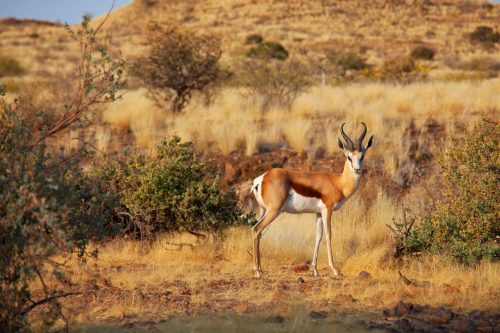
Springboks are graceful antelopes that are endemic to southwestern Africa’s Kalahari Desert. The antelope, which is brown and white in color, is also South Africa’s national animal and its national animal symbol. They feature a series of rings on the ends of their horns, which are around a foot long (12-14 inches).
Springboks have horns that are similar in shape and have a sharp tip that curls inwards on both the male and female. Springboks have a multitude of adaptations that allow them to live in Africa’s harsh environment. Here are a few examples. In the summer, they like a large number of roots that are rich in moisture. During the winter, they forage for food among the shrubs.
Are Animals with Big Horns Considered Rare or Endangered?
Animals with big horns, like the rhinoceros or bighorn sheep, are captivating creatures and some of the rarest animals in the world. While their impressive horns might make them appear formidable, their populations are often at risk. As a result of poaching, habitat loss, and illegal hunting, these majestic beings face the threat of endangerment. Efforts are crucial to ensure the survival of these remarkable animals and preserve the diversity of our natural world.
White Rhino
- Scientific Name: Ceratotherium Simum
- Type of Animal: Mammals
- Diet: Herbivores
- Horns Size: 24 inches

The white rhinoceros is the largest member of the rhinoceros family. They have two horns, with the front horn being longer and the back horn being smaller. The horns of white rhinos are substantially different from those of cattle and other animals. In truth, white rhino horns are a special form of growth comprised of keratin, a structural protein.
White rhinos have a longer front horn that may reach 24 inches in length. Female white rhinos’ front horns can grow up to 59 inches in length. South Africa is home to white rhinos. They feed mostly on grass and create groups of up to 14 rhinos.

